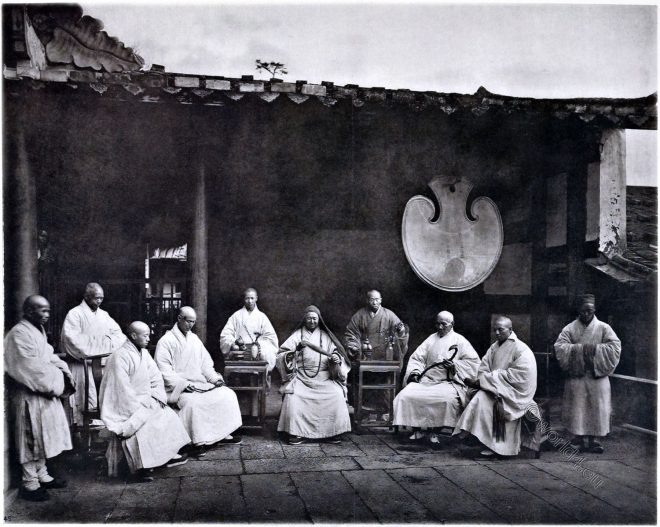In ancient Rome, Pontifex Maximus was the title given to the high priest or chief priest at the head of the Pontifical College of Priests.
Category: Genre
Costumes of the spiritual orders. 10th to 18th century.
Monastic habit of spiritual orders from Poland, Germany and Flanders from the 10th to the 18th century.
Types of nuns. Habit of different orders. Ecclesiastical Monastic orders.
Female religious habit at the end of the eighteenth century. Nuns who live according to the Rule of St. Augustine, St. Dominic, St. Benedict and of Saint Angela Merici.
Amoy Harbour. The Port of Xiamen in 19th century.
Amoy, today Xiamen, Fujian Province China, was one of the earliest ports to which foreigners resorted.
The Abbot and Monks of Kushan Monastery about 1870.
The similarity between the Buddhist faith and the Roman Catholic churches may be traced even more minutely than this. “Buddhists everywhere have their monasteries and nunneries, their baptism, celibacy and tonsure, their rosaries, chaplets, relics, and charms, their fast-days and processions, their confessions, mass, requiems, and litanies, and, especially in Tibet, even their cardinals, and their pope.”
Vampires and Vampirism. Living Vampires. History of Vampires.
THERE is, however, the living vampire, distinct and separate from the dead species.
Chinese Pagoda, Kwangtung Province, on the right bank of the Han river.
The one shown here stands on the right bank of the Han river, near Chao-chow-fu, and, like all the best examples of such edifices, the whole ground structure up to the first story is composed of stone.
Macao in 1834. The settlement of Chinese, British and Portuguese traders.
The occupation of Macao by a grant from the head of the celestial empire to the Portuguese, as a reward for their services against the pirates infesting the islands at the mouth of the Canton river, took place on or about the year 1586.
Portraits of five of the best known Mughal emperors of Delhi.
Although the portraits represent the most illustrious occupants of the Imperial throne, they have not been chosen mainly for that reason, but because in every case the person represented is wearing interesting examples of jewellery.
Indian Elephant Trapping produced at Murshidabad, India.
The beautiful elephant howdah, presented by His Highness the Nawab Nazim of Murshidabad to her Majesty the Queen of England.










